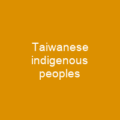Colombia: A Country of Riches and Challenges
Imagine a land where the past meets the future, where vibrant culture intertwines with modernity, and where nature’s beauty is matched only by its diversity. Welcome to Colombia, a country that has captivated the world with its rich history, stunning landscapes, and resilient spirit. Located in South America, it boasts an area of 1,141,748 square kilometers (440,831 sq mi), making it one of the largest countries on the continent.
Colombia is a melting pot of cultures, with its population estimated at around 52 million. The capital district of Bogotá, with its bustling financial and cultural hub, hosts over 8 million people, while other major cities like Medellín, Cali, and Barranquilla thrive as centers of commerce and innovation.
But Colombia’s story is not just about numbers; it’s a tale of resilience. From the indigenous peoples who called this land home for thousands of years to the Spanish conquistadors who arrived in 1499, Colombia has seen its share of triumphs and trials. The country gained independence from Spain in 1819, but it wasn’t until the late 20th century that significant progress was made towards stability and economic growth.
Today, Colombia is a presidential participatory democratic republic with a rich cultural heritage that reflects its history as a colony, fusing elements brought by immigration from Europe and the Middle East with those of the African diaspora and various indigenous civilizations. Spanish remains the official language, but Creole, English, and 64 other languages are recognized regionally.
Geography: A Natural Wonder
Colombia’s geography is a marvel in itself. The country is divided into six main natural regions, including the Andes mountain range and the Amazon rainforest. The Andes dominate much of the interior, with peaks exceeding 4,700 meters (15,420 ft) in height. The Cordillera Oriental, running northeast to the Guajira Peninsula, is particularly notable for its towering heights.
Colombia’s diverse landscapes are a testament to its rich biodiversity. It is one of the world’s seventeen megadiverse countries, with the highest level of biodiversity per square mile in the world and the second-highest overall. The Amazon rainforest, highlands, grasslands, and deserts all contribute to Colombia’s unique ecosystem.
The country’s climate varies significantly across its regions, from tropical rainforests to temperate mountain climates. This diversity supports a vast array of flora and fauna, making Colombia one of the most biodiverse nations on Earth. The Andes are particularly rich in endemic species, with over 40,000 plant species found within its borders.
Economy: A Journey from Agrarian to Modern
Colombia’s economy has undergone a remarkable transformation over the years. Historically an agrarian society, it has rapidly urbanized, with 20% of the workforce employed in industry and 65% in services by the end of the 20th century. Today, Colombia is a market economy with steady growth, boasting a GDP (PPP) of $1 trillion as of 2023.
The country’s economic strength lies in its diverse natural resources, including coffee, flowers, coal, petroleum, and emeralds. Non-traditional exports have boosted foreign sales, but poverty remains a significant challenge, with 26.9% of the population living below the poverty line.
Despite these challenges, Colombia has made strides in recent years. The government’s focus on financial inclusion and infrastructure development aims to bridge the gap between urban and rural areas, fostering economic growth and social progress.
Culture: A Tapestry of Traditions
Colombian culture is a vibrant blend of indigenous, Spanish, African, and Middle Eastern influences. The country’s rich cultural heritage is celebrated through its literature, art, music, and cuisine. From the works of Gabriel García Márquez to the innovative styles of contemporary artists like Fernando Botero, Colombia has much to offer.
Music in Colombia is a reflection of this diverse culture, with over 1,024 folk rhythms that showcase the country’s unique blend of traditions. The popularity of genres such as cumbia and vallenato on the Caribbean coast, pasillo in the Andean region, and harp music in the Eastern Plains are just a few examples.
Colombian cuisine is equally diverse, with dishes like bandeja paisa and sancocho de gallina reflecting the country’s rich culinary heritage. Football remains the most popular sport, but other sports like roller skating, cycling, and baseball have gained significant popularity as well.
Conclusion
In conclusion, Colombia is a land of contrasts, where history meets modernity, and resilience thrives in the face of adversity. From its stunning landscapes to its vibrant culture, this country offers a wealth of experiences that are both enriching and inspiring. As it continues on its journey towards stability and progress, Colombia remains a beacon of hope and diversity for the world.

You want to know more about Colombia?
This page is based on the article Colombia published in Wikipedia (retrieved on January 27, 2025) and was automatically summarized using artificial intelligence.







